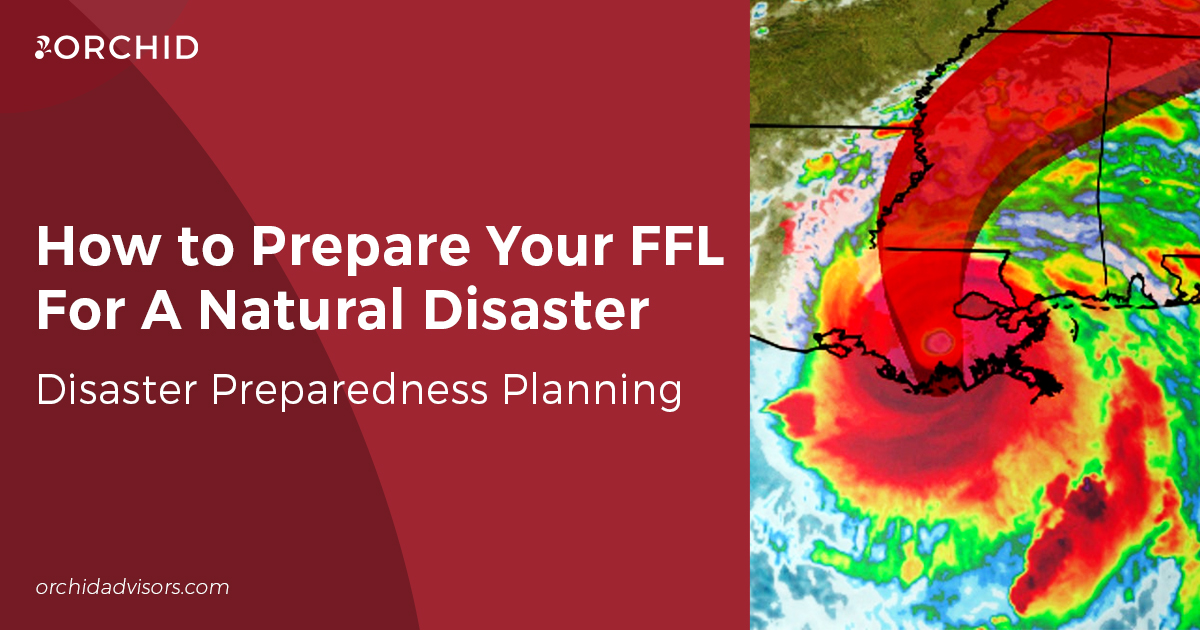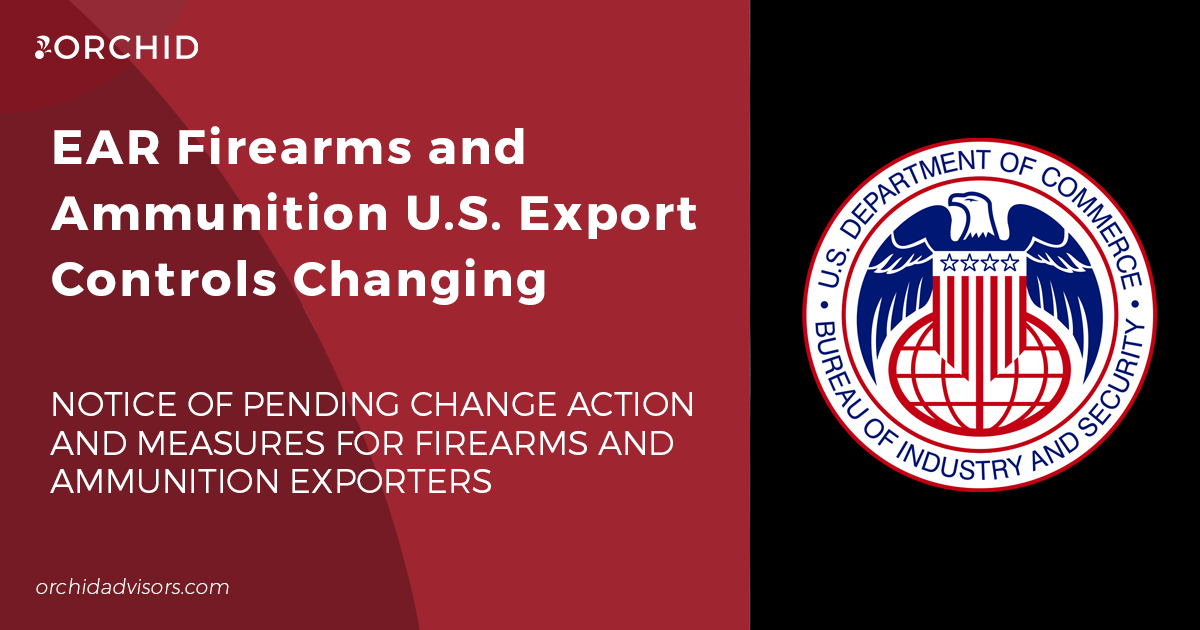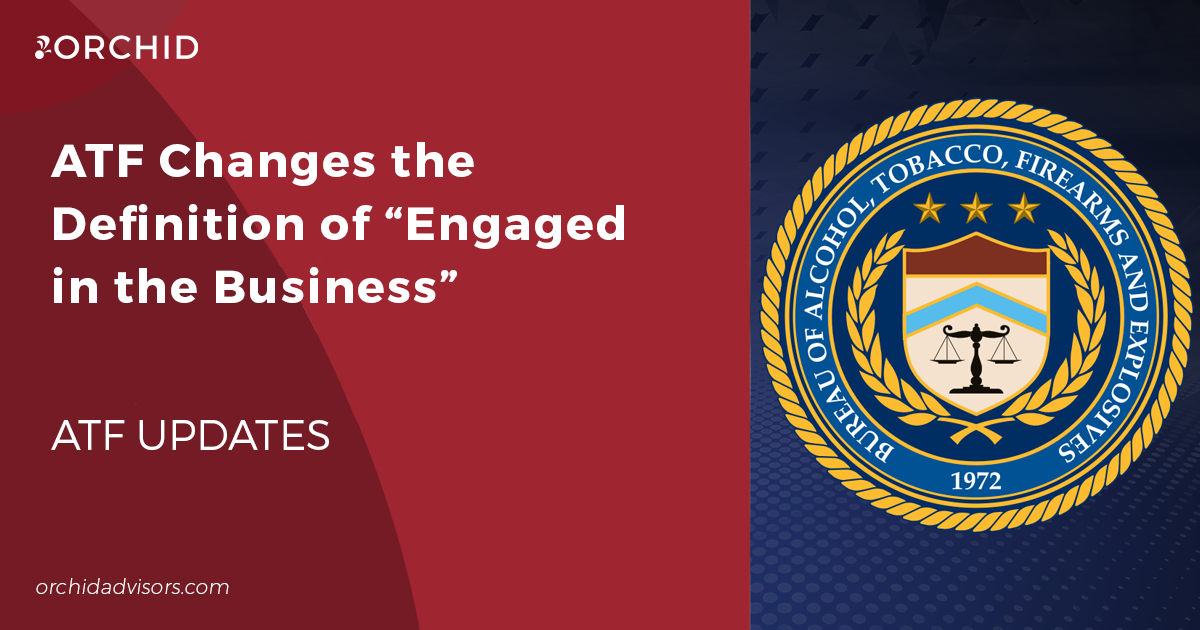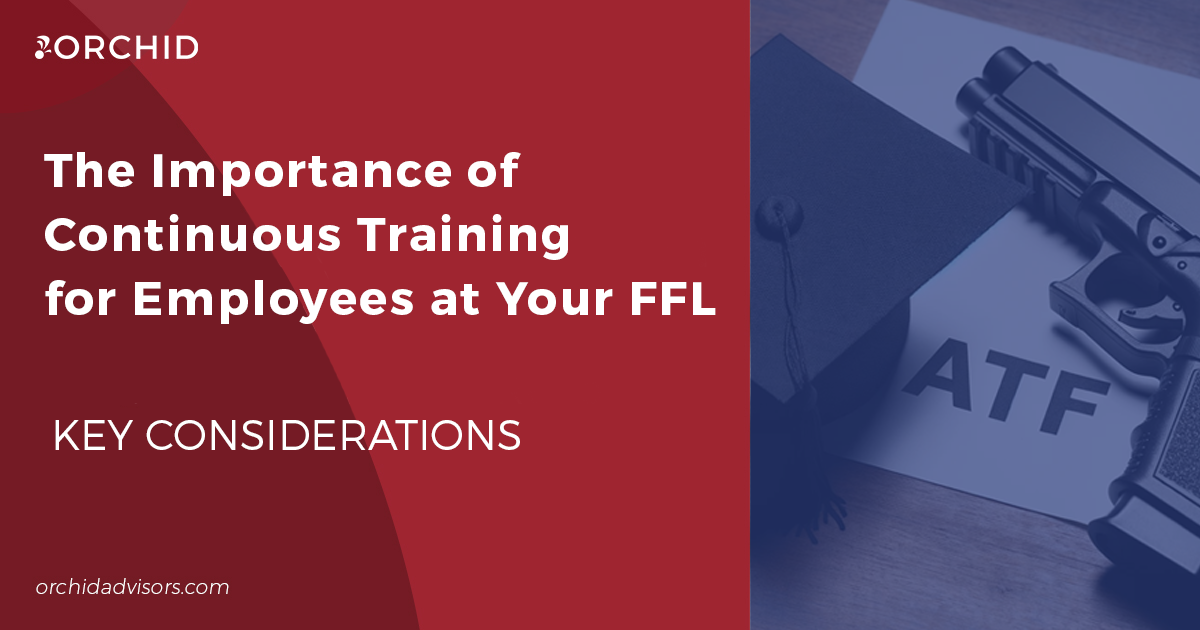From tornadoes and hurricanes to fires and blizzards, natural disasters are a threat to property and life across the country. Helpless against Mother Nature, natural disasters can be frightening for business owners in their path, but proper disaster preparedness can help alleviate these fears.
While the type of natural disaster will determine the specific details of your disaster preparedness plan, every plan should include similar aspects. Using the ATF publication “Disaster Preparedness for Federal Firearms Licensees” (ATF P 3317.7) as a guide, we’ll review each aspect so your FFL can effectively anticipate, prepare for, mitigate the effect of, and recover from a devastating disaster.
Human Resources
As a business, your employees are your most valuable assets. As such, it’s important you communicate with them before, during and after disaster scenarios. To do so, you’ll first need their contact information.
At all times, FFL owners or human resource teams should maintain a list of employees and their contact information, including addresses, phone numbers, emails and emergency contacts. To ensure accuracy, this information should be reviewed and updated at least every six months.
In the case of a natural disaster, this contact information will serve as your primary means of reaching employees to keep them informed of the active situation, including change of operating hours and possible closures. Employees should be made aware of how they will be contacted in the case of a natural disaster and who they should contact if they have questions or to report they are safe.
Owners and HR departments should also anticipate and share if and how employees will be paid for any time missed due to a natural disaster and/or how health insurance coverage may be affected. Businesses should also be prepared to help employees file for unemployment in a worst-case scenario.
Inventory Management
In addition to employees, you’ll need to manage your inventory ahead of a natural disaster. Raw materials, firearms, ammunition and other shooting accessories and products should be inventoried to protect investments and establish loss for potential insurance purposes. You may also consider taking photos or videos of products as additional proof.
Depending on the incoming natural disaster, non-regulated products should be stored to best avoid potential damage – such as off the ground in the case of flooding. As required by law, firearms and ammunition must be stored in locked vaults or safes, or using cable locks, to deter and prevent potential burglary and looting.
FFLs may also seek an ATF variance to temporarily move firearms to another, safer location and are encouraged to inform the agency of the relocated inventory. Permanent secondary locations can also be established with an additional FFL application, though these should be made well in advance of a natural disaster to allow time for approval.
Recordkeeping
In the case of property damage or total loss, it’s critical FFL documents and compliance records are kept safe and secure. Today, that usually means digital storage.
If your FFL has not done so already, your firearms license, employee contact information, inventory, insurance policies and other documents should be digitalized, backed up and stored off-site on a protected hard drive or in the cloud using a third-party service – like Orchid eStorage™. ATF Forms 4473 and 3310.4, as well as firearm acquisitions and disposition records, can also be stored digitally with electronic bound book software and services like 4473 Cloud.
Compared to paper records, digital storage not only protects documents from potential fire and water damage but also allows for remote access should your place of business become inaccessible during a disaster.
Business Insurance
While insurance doesn’t physically protect your FFL, it can cover your business, assets and income in the event of physical damage from a natural disaster. FFL owners and operators should review their existing insurance policies to understand what is and isn’t covered, as well as ensure coverage is sufficient.
Standard business insurance typically covers damage from wind, rain and hail, but not all insurers will sell policies to businesses in areas deemed a high risk to natural disasters, such as coastal areas prone to hurricanes. Businesses may also need separate flood and earthquake policies, which are often more expensive and come with higher deductibles.
FFLs should also consider business interruption insurance, which compensates for income lost due to a forced shut down following a disaster.
Structural Security
As an FFL owner, one of your many responsibilities is protecting firearm inventory from theft or loss by way of structural security. Like your home, the security of your business should be evaluated on a regular basis – especially before a natural disaster.
The first part of structural security is your physical building. Prior to a natural disaster, the interior and exterior of your FFL should be thoroughly inspected, including all doors and windows, ceilings and roofs, load-bearing walls, and landscaping. If time allows, consider using plywood to board up windows and gates. Window bars and door gates can also be installed in case of glass breakage, as well as serve as greater general protection.
In addition, all window and door locks should be tested, exterior wall cracks and holes filled, and overgrown trees and shrubbery cut back to minimize potential damage. Be sure to also tie down or move in any signs, trash cans, and other objects kept outside your facility to prevent their loss and further damage.
The second part is your building’s security technology, which could include lighting, alarm systems, and video surveillance. These systems should be evaluated for proper function and operation, tested by employees, and their service confirmed by security companies and/or local authorities. Remember to change bulbs, clean camera lens, and adjust angles to ensure maximum effectiveness. You might also consider installing additional interior or exterior cameras to monitor possible areas of concern, such as vaults, storage rooms, and roofs, as this footage could prove useful in making insurance claims and police reports.
And don’t forget – FFLs are required by law to report a theft or loss of firearms to local law enforcement and the ATF within 48 hours.
Contact Orchid regulatory experts today for guidance in applying for ATF variances and learn how we can protect your FFL from compliance disasters.
Below are additional resources for business disaster preparedness:
ATF Disaster Preparedness for FFLs (ATF P 3317.7)
ATF Safety & Security Information for FFLs (ATF P 3317.2)
ATF Loss Prevention for Firearm Retailers (ATF P 5380.1)
Ready.gov Preparedness Planning for Your Business
IBHS Open For Business-EZ Toolkit
SBA Business Disaster Loan Assistance







0 Comments